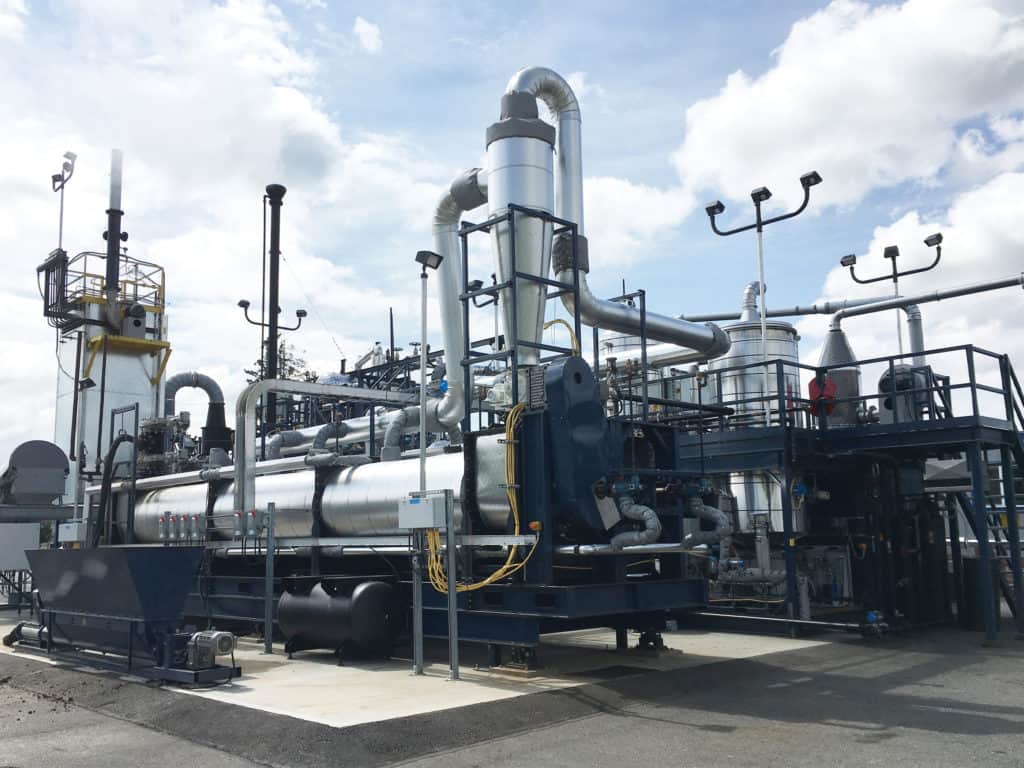Seeing as how women are only pulling in about 80 cents on the dollar for “co-equal” work these days, it’s a pretty sure bet that Melinda Gates is doing at least 62.5% of the work in her and Bill’s “co-equal” relationship. For this reason, we decided to give her top billing for a change.
In order to make real change, however, the Gates Foundation continues to give financially un-equal people top billing, investing in a myriad of solutions that can fundamentally improve their existence. Warren Buffet credits Melinda with being the big picture thinker in the family, but Bill seems to be the one standing out front and center on several projects that, if scaled up, could make a real impact on our immediate future. Here are three of them.
TERRAPOWER
Our world continues to remain addicted to power in all its many forms, and electrical power is no exception. According to Third Option calculations, once we max out on solar, wind, and water power, we are still short at least 300 GB of generating capacity, if we ever hope to turn America’s energy grid completely green. Converting methane (CH4) or water (H2O) into hydrogen fuel is still a good option, as well as creative ways to use the oceans as a power source, but nuclear has got to step up, and so far, the safest and smartest design is the Molten Salt Reactor (MSR) prototype. TerraPower’s version uses molten chloride salt as both the fuel source and the coolant, which eliminates the fuel enrichment processes necessary in the older model reactors – processes that created weapons-grade uranium and left behind radioactive “depleted uranium” waste, the two negative externalities that gave nuclear power its bad reputation.

Depleted uranium (U-238) has a half life of 4.5 billion years; we created this byproduct before knowing what to do with it, then we dumped it in the ocean, until we figured out that this also was a bad idea; now we spend billions a year to store it, while we spend billions more trying to create a solution to the problem we brought upon ourselves. TerraPower’s Traveling Wave Reactor (TWR) boasts the ability to use this depleted uranium, which in theory can lower the radioactive half life to as little as 100 years. The other good news is that 99.3% of uranium ore on the planet is also in this form (U-238), which means we could re-fuel these reactors for quite some time.
The Third Option’s ultimate goal is to also burn up the 15 kilograms of enriched uranium / plutonium housed within each of the 6200 warheads that make up our current U.S. weapons stockpile; not having to maintain them would save another $4.5 Billion a year. Sixty-six warheads could power the entire U.S. for one year. We have 2400 “retired” ones just sitting around, waiting to be dismantled – that’s thirty-six years of power – after that, we could start dismantling our 3800 “active” warheads, saving just enough (100 should do it) to destroy all life on the planet, should we decide to go that direction instead.
WATERLESS TOILET
The World Health Organization (WHO) has some scary statistics:
“Two billion people currently do not have basic sanitation facilities, such as toilets or latrines. Of these, 673 million still defecate in the open, for example in street gutters, behind bushes or into open bodies of water…As many as a billion people are thought to consume food irrigated by wastewater…Inadequate sanitation causes an estimated 432,000 diarrhoeal deaths a year…and is linked to the transmission of other diseases like cholera…hepatitis A, typhoid and polio…”

The numbers suggest that we do not have enough water in the world to supply two billion people with the kind of water-wasteful flush toilets Americans currently use, so the Gates Foundation has invested more than $200 million toward a waterless solution to this issue.
This Reinvent the Toilet Challenge has generated many designs, like the fully self-contained Nano Membrane Toilet developed by England’s Cranfield University. Closing the lid cleans the bowl and feeds the waste into two separate chambers; liquid is upgraded to “non potable water” for irrigation, etc., and solid waste is incinerated into ash (free of any pathogens), while creating a small amount of energy in the process. This not only drives the many processes within the toilet, but creates enough power to charge smaller devices like mobile phones.
Part of The Third Option’s Foreign Policy objectives include sending our kids, as ambassadors, to many countries where these types of new technologies are needed most. The hope is to teach people many ways to live fully self-contained lives, from housing and energy, to communication and agriculture; certainly, water and sanitation are an important piece to this puzzle.
OMNI PROCESSOR
The Omni Processor is a large scale waste management system capable of solving a range of issues. It can quickly turn human waste into clean drinking water at a rate of 6,000 gallons a day, meanwhile generating 100-200 kilowatt hours of electricity in the process. It also leaves behind usable fertilizer, in the form of ash.

Besides its obvious use in countries without sanitation systems, The Third Option would like to use it as an interim step to clean up the U.S. Meat and Dairy industry. 55% of all the freshwater in the U.S. goes to raising animals for human consumption. These animals need 216 million acres of the agricultural land, which in turn releases over 240 million metric tons of green house gases each year, much of it from either synthetic fertilizers, or methane gas coming from the cows themselves. The cows are fed corn to fatten them up, but corn is not digestible to them, thus creating more methane than natural grazing. Their feces adds an extra burden to the environment, contaminating our soils and water supply.
Anaerobic Methane Digesters (like Omni Processors) can convert all the methane waste of cows, generate electricity for the farm, replace greenhouse gas-emitting synthetic fertilizers with a safer organic version, and provide water to reuse in the highly water-intense process of meat production.
Thanks to the Gates Foundation for directly investing in solutions that help both people and the planet. For ideas on how the rest of us could similarly invest, go to The Third Option.

 Eugene Chen’s Infinitely Recyclable Plastic
Eugene Chen’s Infinitely Recyclable Plastic